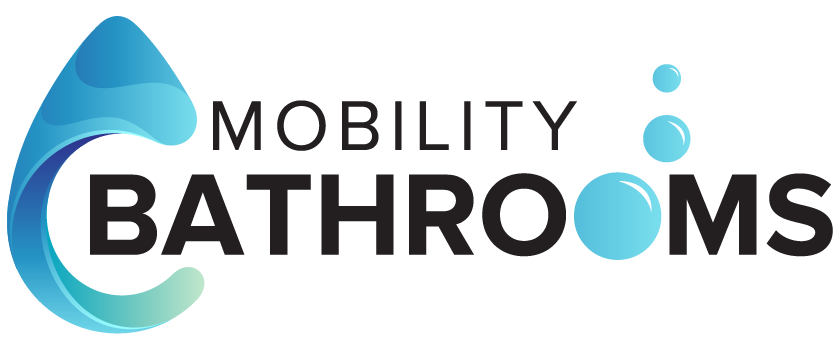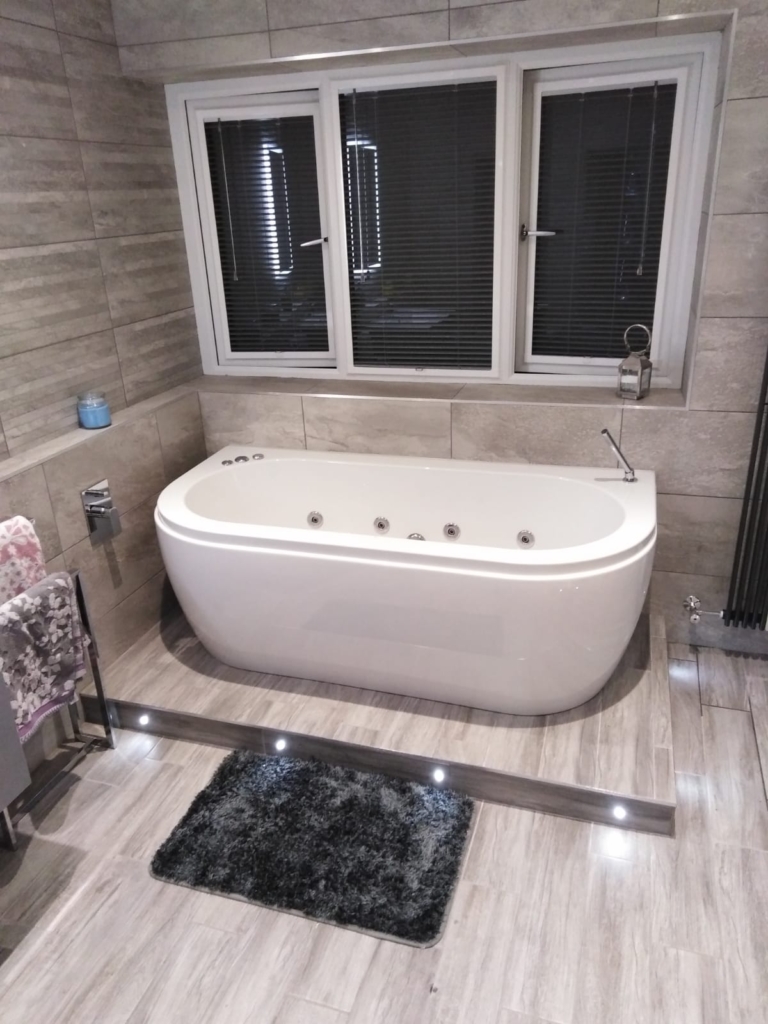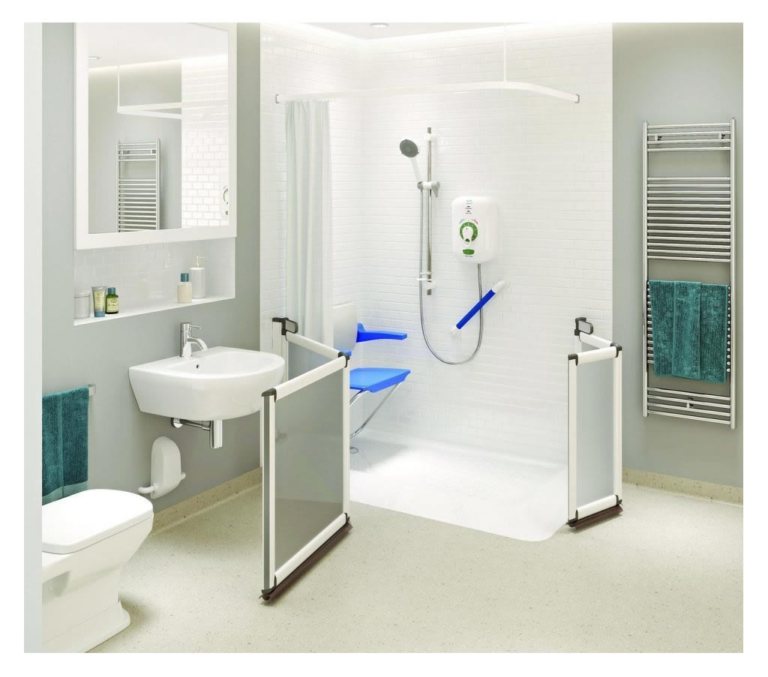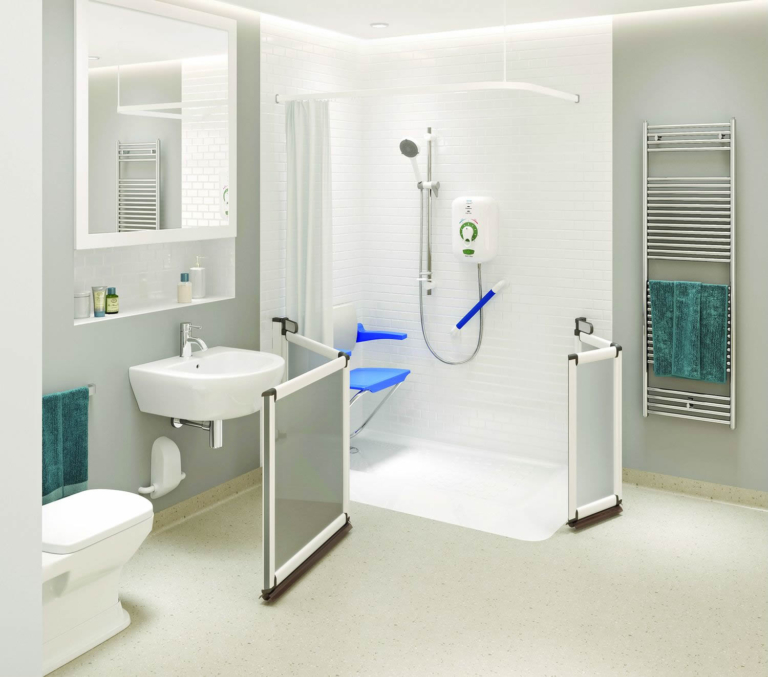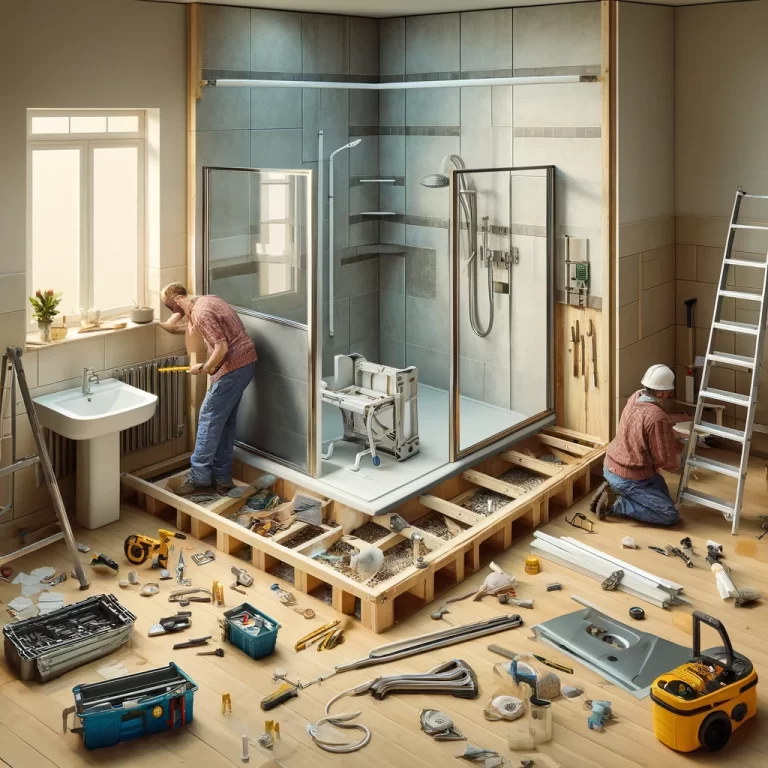How much does a mobility bathroom cost
Are you or a loved one in need of a mobility bathroom?
We will explore what exactly a mobility bathroom is and why people may need one. From the aging population to disabilities and accidents, there are various reasons why a mobility bathroom can be essential. We will also break down the key features of a mobility bathroom, the costs involved, and even some financing options to consider.
Stay tuned to learn more about how you can save money on creating a functional and accessible bathroom space.

What Is a Mobility Bathroom?
A mobility bathroom is a specially designed bathroom space that caters to individuals with mobility challenges, disabilities, or the elderly, enhancing accessibility and safety.
- These bathrooms typically feature handrails, grab bars, non-slip flooring, and widened doorways to accommodate mobility aids such as wheelchairs and walkers.
- By integrating elements like roll-in showers, shower seats, and adjustable sink heights, a mobility bathroom ensures individuals with limited mobility can perform daily tasks independently and comfortably.
One of the primary benefits of a mobility bathroom is that it reduces the risk of accidents and promotes greater self-reliance for people with mobility limitations.
Why Do People Need a Mobility Bathroom?
People may require a mobility bathroom due to various reasons such as ageing population demographics, disabilities, or incidents causing injuries that limit movement and accessibility in standard bathrooms.
In an ageing society, the need for mobility bathrooms has become more pressing as older individuals may face challenges in maintaining their independence and safety within a traditional bathroom setup. For people with disabilities, the concept of universal design has gained prominence, emphasising the importance of creating spaces that are accessible and accommodating for all. Accidents resulting in injuries can have a profound impact on an individual’s mobility, making the adaptation of a bathroom essential for their daily functionality.
Aging Population
The ageing population is a significant factor driving the demand for mobility bathrooms, as older individuals experience age-related mobility issues that necessitate enhanced bathroom accessibility and safety measures.
Common mobility challenges faced by the elderly include difficulties in moving around, balance issues, and reduced strength, making everyday tasks like bathing and using the toilet more challenging. These challenges often lead to an increased risk of falls and injuries in traditional bathrooms that are not designed with accessibility in mind.
Incorporating features such as grab bars, walk-in showers, raised toilets, non-slip flooring, and handheld showerheads can greatly improve independence and safety for seniors. Accessible bathroom solutions not only benefit older adults but also individuals with disabilities, ensuring that everyone can maintain their dignity and quality of life.
Disabilities
Individuals with disabilities often require mobility bathrooms to accommodate their specific needs and ensure a safe and accessible environment for daily self-care routines.
These specialised bathrooms are essential for individuals facing challenges with mobility, whether due to physical impairments, ageing, or temporary injuries. Mobility bathrooms are designed with features like grab bars, non-slip flooring, and wider doorways to facilitate easy access and movement. Different disabilities have unique requirements, such as wheelchair accessibility, adjustable sinks, and roll-in showers.
The presence of these accessible bathroom features plays a crucial role in fostering independence and enhancing the quality of life for people with disabilities. By incorporating elements like raised toilets, handheld showerheads, and lever handles, mobility bathrooms offer comfort, safety, and convenience, allowing individuals to navigate their self-care tasks with dignity and autonomy.
Accidents or Injuries
Accidents or injuries that result in limited mobility can prompt the installation of mobility bathrooms to facilitate independent living and enhance safety within the home environment.
These specially designed bathrooms play a crucial role in adapting the living space to the changing needs of individuals recovering from injuries or dealing with decreased mobility.
Equipped with features such as grab rails, non-slip flooring, shower seats, and wheelchair-accessible layouts, mobility bathrooms ensure a safe and accessible environment for individuals to perform daily tasks with ease.
By reducing the risk of accidents and providing the necessary support, these bathrooms offer a sense of security and independence, promoting physical well-being and psychological comfort during the recovery process.

What Are the Features of a Mobility Bathroom?
The features of a mobility bathroom include grab rails, walk-in showers, and non-slip flooring, all designed to enhance safety, accessibility, and convenience for individuals with mobility challenges.
Grab rails are strategically placed to provide support and stability for users when moving around the bathroom, especially near the toilet and shower areas. Walk-in showers offer easy access without the need to step over a high threshold, reducing the risk of tripping or falling. Non-slip flooring materials help prevent accidents by providing secure footing even when the floor is wet.
Together, these features create a user-friendly and inclusive bathroom environment that prioritises the safety and independence of individuals with mobility limitations. By incorporating these elements, mobility bathrooms promote autonomy and confidence in daily self-care tasks.
Grab Bars
Grab rails are vital components of a mobility bathroom, providing stability and support for individuals when moving in and out of the shower or around the bathroom space.
These essential safety features play a crucial role in preventing falls in bathrooms, especially for elderly individuals or those with mobility issues. By offering a secure hold, grab rails give users the confidence to navigate slippery surfaces with greater ease.
Furthermore, grab rails promote independence by allowing individuals to perform daily tasks with minimal assistance. Whether it’s standing up from a toilet or stepping into the bath, these support aids enable users to maintain their dignity and autonomy within their personal hygiene routines.
Most importantly, the presence of grab rails in a bathroom ensures user safety by significantly reducing the risk of accidents and injuries. They serve as dependable anchors that enhance overall security and peace of mind for both users and their carers.
Walk-in Showers
Walk-in showers offer easy accessibility and convenience in mobility bathrooms, removing the need to step over high thresholds and providing a safe bathing solution for individuals with mobility limitations.
In mobility bathrooms, the design of walk-in showers focuses on universal accessibility, featuring wide entryways that accommodate wheelchairs or walking aids effortlessly. The absence of doors makes entry and exit hassle-free, enhancing the overall user experience. These showers often come with non-slip flooring and strategically placed grab bars for added safety, reducing the risk of falls and providing stability during bathing. The seamless integration of modern fixtures and customisable options allows individuals to create a personalised and user-friendly bathing space.
Non-slip Flooring
Non-slip flooring is a vital feature in mobility bathrooms, reducing the risk of slips and falls, especially in wet conditions, and ensuring a secure and stable surface for individuals with mobility challenges.
Installing non-slip flooring in mobility bathrooms goes beyond just safety; it also contributes to the overall accessibility and comfort of the space. The texture and grip provided by non-slip surfaces offer increased stability, making it easier for people with mobility issues to move around confidently. The low maintenance requirements of non-slip flooring make it a practical choice, needing minimal upkeep to maintain its effectiveness and durability. Its impact on reducing accidents and enhancing user experience makes it an essential consideration for creating an inclusive and safe bathroom environment.
How Much Does a Mobility Bathroom Cost?
The cost of a mobility bathroom can vary based on factors such as design complexity, quality of materials, installation requirements, and additional features chosen to enhance accessibility and convenience.
Design complexity plays a significant role in determining the overall pricing of a mobility bathroom. More intricate designs often involve customised solutions and specialised fixtures, which can increase costs. The choice of materials is crucial, as higher-quality materials like stainless steel grab bars and slip-resistant flooring will come at a premium. Installation requirements, such as retrofitting existing structures or creating new layouts, also impact the total expenses. Additional features like walk-in showers, raised toilets, and grab rails can add to the comfort and accessibility but contribute to the final bill.
Factors Affecting the Cost
Several factors impact the cost of a mobility bathroom, including design complexity, material quality, installation requirements, and the inclusion of specialised features like grab bars or walk-in showers.
Design complexity plays a significant role in determining the overall expenses of a mobility bathroom project. Intricate designs with unique layouts and special accommodations for accessibility needs can increase both material and labour costs. The material quality chosen for various components such as flooring, fixtures, and accessories influences the final price. Opting for high-quality, durable materials can lead to a higher upfront cost but often results in better longevity and lower maintenance expenses in the long run.
The installation requirements, including modifications to plumbing, electrical systems, and structural adjustments, are crucial cost determinants. Specialised features like grab bars or walk-in showers cater to specific needs but can add to the project’s overall budget. It’s essential to carefully consider these elements when planning a mobility bathroom to ensure a balance between cost-efficiency and functionality.
Average Cost for a Basic Mobility Bathroom
On average, a basic mobility bathroom installation may cost within a certain price range, depending on the simplicity of design, material selection, and essential accessibility features included in the project.
Regarding estimating the cost, factors such as the size of the bathroom, labour expenses, and any additional modifications needed for accessibility play a significant role. The price range for a basic mobility bathroom installation typically falls between £5,000 to £15,000. This cost breakdown includes expenses for fixtures, grab bars, non-slip flooring, widened doorways, and other essential features. It’s essential to consider that customisation and premium materials might drive the expenses higher. For those seeking budget-friendly solutions, opting for simpler designs and standard materials can help keep costs at a more modest level.
Average Cost for a Luxury Mobility Bathroom
For those seeking a luxury mobility bathroom experience, the cost can increase significantly due to premium material choices, high-end fixtures, and sophisticated design elements that elevate the overall aesthetic and functionality.
Upscale features such as smart toilet systems with bidet functions, programmable LED lighting, heated flooring, and voice-activated controls add to the luxurious appeal of these bathrooms.
In addition, the use of high-quality marble, granite, and premium hardwoods for countertops, flooring, and cabinetry further elevate the opulence and grandeur of the space, making it a statement of elegance.
Design enhancements like oversized rainfall showers, sleek freestanding tubs, custom vanities, and integrated audio systems offer a blend of comfort, convenience, and style, transforming a basic necessity into a pampering sanctuary.
Are There Any Financing Options for a Mobility Bathroom?
Various financing options are available for mobility bathroom projects, including government programmes, home equity loans, and grants from charitable organisations aimed at supporting accessibility modifications for individuals with mobility needs.
Government assistance programmes play a crucial role in providing financial aid for accessibility renovations, offering specific grants and subsidies to help cover the costs of mobility bathroom installations. Individuals can explore loan possibilities such as personal loans or home equity lines of credit to fund their projects. Various charitable organisations also provide grants specifically tailored to support those in need of mobility adaptations, alleviating the financial strain associated with making homes more accessible.
Finding the right financing solution is essential to ensure that individuals with mobility needs can access the necessary resources for a safe and comfortable living environment.
Government Programs
Government programmes offer financial assistance to individuals seeking to install mobility bathrooms, with subsidies, tax credits, or rebates available to help offset the costs of accessibility modifications in residential properties.
These government-sponsored financial support programmes aim to make it easier for homeowners or individuals with mobility challenges to enhance their bathrooms for better accessibility and safety.
Eligibility criteria typically include factors such as income level, disability status, and the necessity of the bathroom modifications. Applicants may need to provide documentation such as medical reports or proof of financial need to qualify for the assistance.
The application process usually involves filling out forms, submitting the required documents, and having the modifications assessed to ensure they meet the specified accessibility standards.
Benefits provided through these programmes can vary but may include covering a portion of the renovation costs, providing tax relief, or offering assistance in navigating the installation process.
Home Equity Loans
Home equity loans present an option for financing mobility bathroom projects by leveraging the equity in one’s property to secure a loan specifically earmarked for accessibility modifications and home improvements.
One of the key benefits of using a home equity loan for funding accessibility upgrades is the potential for lower interest rates compared to other types of loans, such as personal loans or credit cards. This can lead to significant cost savings over the life of the loan. The interest paid on a home equity loan may be tax deductible, providing further financial advantages to homeowners.
It is essential to carefully consider the risks associated with tapping into the equity of your home. By using your property as collateral, you are putting it at risk of repossession if you are unable to repay the loan. It’s crucial to assess your financial situation and ensure that you have a stable income to meet the repayment terms.
Grants and Charities
Grants and charitable organisations provide financial assistance to individuals in need of mobility bathroom installations, offering funding support, equipment donations, or subsidised services to promote accessibility and independence.
In many cases, these grants are specifically tailored to help those with mobility limitations or disabilities. They play a crucial role in facilitating the modification of bathrooms to meet the unique needs of individuals, such as installing grab bars, non-slip flooring, or wheelchair-accessible features.
- Charitable initiatives also make a significant impact by partnering with contractors and suppliers to secure discounted rates for materials and labour, maximising the value of the funding allocated for each project.
Applicants typically need to demonstrate their financial need, provide detailed project plans, and meet specific eligibility requirements set by the granting organisations.
This charitable support not only enhances the physical environment but also boosts confidence and enablement for those benefiting from the improved accessibility.
How Can You Save Money on a Mobility Bathroom?
Saving money on a mobility bathroom project can be achieved through strategies like comparing quotes from different contractors, considering DIY options, and opting for used or refurbished equipment to reduce overall expenses.
When engaging with contractors, examine their experience in handling similar projects to ensure quality work at a reasonable price. By taking on certain aspects of the project yourself, such as painting or simple installations, you can save on labour costs. Research local suppliers for cost-effective yet durable equipment, and don’t overlook the possibility of finding discounted items at renovation sales or online marketplaces.
Compare Quotes from Different Contractors
Obtaining and comparing quotes from multiple contractors for a mobility bathroom project can help homeowners secure competitive pricing and favourable terms that align with their budget and quality expectations.
When embarking on a mobility bathroom installation, it’s essential for individuals to conduct thorough research and reach out to various contractors for pricing estimates. By comparing these quotes side by side, homeowners are not only able to identify the best financial deal, but also scrutinise the proposed materials, timeline, and workmanship quality. This meticulous process enables them to craft a comprehensive picture of what each contractor offers and enables them to negotiate for better rates or more favourable contract terms.
Consider DIY Options
Exploring do-it-yourself (DIY) options for certain aspects of a mobility bathroom project can potentially reduce labour costs and overall expenses, provided homeowners have the necessary skills and resources for safe and effective installations.
One significant benefit of taking on DIY projects in a mobility bathroom renovation is the control it gives homeowners over the process. By tackling tasks such as installing grab bars, non-slip flooring, or raised toilet seats themselves, individuals can customise the design to fit their specific needs and preferences, ensuring a truly personalised final product.
It’s essential to acknowledge the importance of safety when embarking on these endeavours. Prior knowledge of proper installation techniques and adherence to building codes can prevent accidents and ensure that the bathroom remains a safe and accessible space for individuals with limited mobility.
Opt for Used or Refurbished Equipment
Choosing second-hand or reconditioned equipment for a mobility bathroom can offer cost-effective solutions without compromising on quality, allowing homeowners to access essential fixtures and features at reduced prices.
One of the key advantages of opting for reconditioned or second-hand equipment is the substantial cost savings it brings, making it a budget-friendly option for individuals looking to renovate their bathrooms.
Many reconditioned products undergo thorough inspections and testing processes to ensure they meet quality standards similar to new items, providing peace of mind to homeowners.
Some suppliers offer warranty options on reconditioned equipment, assuring buyers of post-purchase support and protection against potential defects.
Choosing reconditioned or second-hand equipment presents a practical and economical way to achieve a well-equipped mobility bathroom.
Frequently Asked Questions
What is a mobility bathroom and why is it important?
A mobility bathroom is a bathroom that is designed specifically for individuals with mobility limitations. It typically includes features such as grab bars, walk-in showers, and raised toilets to make daily tasks easier. It is important for those with mobility challenges to have a safe and accessible bathroom to maintain their independence and prevent accidents.
How much does a basic mobility bathroom cost?
The cost of a basic mobility bathroom can range from £2,000 to £5,000, depending on the specific features and materials used. Factors that can affect the cost include the size of the bathroom, the type of fixtures and accessories chosen, and any additional construction or labour costs.
What are the factors that affect the cost of a mobility bathroom?
There are several factors that can impact the cost of a mobility bathroom, including the size of the bathroom, the type of fixtures and accessories selected, any necessary construction or remodelling, and the labour costs. Additionally, the location and accessibility of the bathroom can also play a role in the overall cost.
Are there any financing options available for a mobility bathroom?
Yes, there are various financing options available for a mobility bathroom, such as home equity loans, personal loans, and government assistance programmes. It is important to research and compare these options to find the best fit for your budget and needs.
Can I make my existing bathroom more accessible instead of building a new one?
In some cases, it may be possible to make modifications to your existing bathroom to make it more accessible. However, this may not be feasible depending on the layout and size of the bathroom. It is best to consult with a professional to determine the best solution for your specific situation.
How can I get an accurate cost estimate for a mobility bathroom?
The best way to get an accurate cost estimate for a mobility bathroom is to consult with a professional contractor or bathroom specialist. They can assess your specific needs and provide a detailed estimate based on the size, features, and other factors of your bathroom. It is recommended to get quotes from multiple sources to find the best price.
